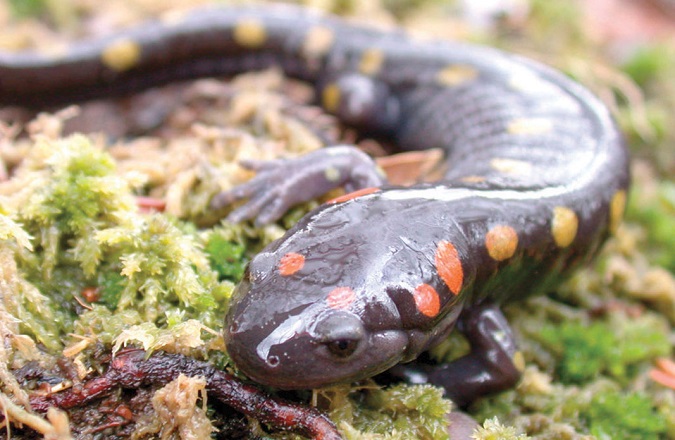
Diversity is the spice of life. Nowhere is this more apparent than where land and water meet. The blending of terrestrial and aquatic environments creates a wetland, an ecosystem that often supports more life than either the land or water alone.
When they hear the term “wetlands,” many people in our region only envision the marshes found mainly along the shore of the Chesapeake Bay and tidal portions of rivers. They are aware that these areas are extremely valuable as spawning and nursery grounds for fish, blue crabs and other Bay aquatic life.
These marshes are also important to wintering waterfowl. Colonial waterbirds, shore birds and some waterfowl feed and nest in coastal marshes in the spring and summer.
The meandering flow of water provides opportunities for boating, fishing, crabbing and bird watching.
Low-lying marshes also store floodwater, minimizing erosion. This water is cleansed while it is slowly released: Some nutrients are processed by vegetation, and pollutants and sediments are intercepted and trapped.
The forested wetland, meanwhile, is just as valuable but often overlooked. Many forested wetlands have standing water on a seasonal or temporary basis. They provide the same benefits as marshes even if it is not as apparent.
As with all wetlands, the hydrology — or the movement of water — drives the forested wetland ecosystem. The hydrologic cycle has a wet and a dry phase that is affected by local weather, climate and human activities.
From early summer to late fall, precipitation in the Bay watershed becomes less frequent. Vegetation, particularly trees, uses large amounts of water to grow. As a result, the groundwater in forested wetlands may drop to a foot or more below the surface. This is the dry phase and a casual observer would scarcely recognize the habitat as a wetland.
The wet phase begins in late fall through spring. Nourished by thaws, spring rains and dormant vegetation, groundwater levels rise, often covering the surface of the wetland. The wetland habitat is strikingly apparent. This alternating dry/wet cycle influences the diversity of plant life which, in turn, influences the types of wildlife found here.
Many trees thrive in forested wetlands, including red maple, sweet gum, black gum, American holly, willow oak and loblolly pine. Highbush blueberry, spicebush and sweet pepperbush are some of the common shrubs. The forest floor explodes with a wide variety of flowering plants, ferns and vines.
Spring moisture and warming temperatures promote a literal rebirth for some species. Small saturated areas and temporary pools are critical for amphibians that gather in them to mate and lay eggs. These pools are critical nurseries for species like green frogs, wood frogs, spring peepers, red-spotted newts and spotted salamanders to name just a few.
Bird watchers appreciate the importance of forested wetlands, which provide breeding and nesting habitat to both migratory and resident birds. Common yellow throat, black-and-white warbler, Kentucky warbler, oven birds, tufted titmouse and wood thrush are a few of the birds whose songs can be heard here.
Dead trees, known as snags, are prime sites for cavity-nesting birds like wood ducks, many species of woodpeckers and owls.
Although you may only spy their tracks, black bear, white-tailed deer, raccoon, beaver, opossum and river otter are just a few of the larger mammals who call these forested wetlands home.
Just like marshes, forested wetlands are great places to hunt, fish, watch wildlife and explore. Expansive floodplains temporarily store water from excessive rains, reducing the threat of flooding. And, as is the case in coastal marshes, floodwaters are slowly released, suspended sediments and pollutants are intercepted and trapped, which cleanses the water before it returns to local streams or the water table.
Forested wetlands literally breathe life into the Chesapeake Bay ecosystem, supporting a huge diversity of plants from tiny mosses to huge trees.
A multitude of animals use these areas for mating, spawning, nesting and rearing their young.
Forested wetlands not only help protect our property but also clean our waterways.
These often overlooked underappreciated swampy lands preserve the biodiversity and healthy functioning of our planet.
